East Cork’s Fota Island boasts a trio of world-class attractions — a Regency mansion, wildlife park and five-star resort, writes Domhnall O’Donoghue.
Thanks to my father’s thick Munster drawl, when my younger self first visited East Cork’s Fota Island, I thought it was a place where tourists used their cameras. Of course, I wasn’t right — but I also wasn’t wrong, given how photogenic the area’s main attractions are, as I rediscovered this winter.
Standing outside Fota House — the Regency mansion, set amongst 115 acres of gardens — I furiously click my phone, hoping to capture its splendor, enhanced by the evening’s golden sunset. Despite my best efforts, the results don’t do justice to this majestic property, which started as a humble, two-story hunting lodge.
Owned by descendants of Philip de Barry — a Cambro-Norman warrior who’d been granted ownership of Fota Island following his participation in the 12th-century invasion of Ireland — it initially served as a base for fishing, shooting and exploring the surrounding Cork Harbour.
That all changed in the early 19th century when Fota House was reimagined by renowned architects Sir Richard Morrison and his son, William, and became the Smith-Barry’s permanent home.
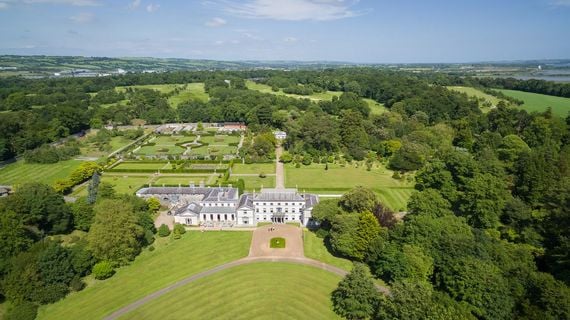
Fota House.
The final owner was Dorothy Bell — after her death in 1975, the estate was first purchased by University College Cork, drawn to its farmland. More recently, the property and surrounding gardens were acquired by the Irish Heritage Trust. Across 70 rooms, they performed a stunning restoration, providing visitors — and fans of shows like Downton Abbey — with a snapshot of how Ireland’s wealthiest families once lived.
‘It has an extraordinary history,’ says Catherine Murphy, the house’s sales and marketing manager. And this local should know — as a teenager, she babysat some of the property’s younger residents.
We explore the neoclassical interior, passing the columned entrance hall, before visiting the library, servants’ wing, nursery and bedrooms. I learn that Fota House has doubled as a location for many television productions — unsurprisingly, given its remarkable likeness to iconic properties like the Waldorf Astoria.
While the family members changed throughout the centuries, Catherine says the esteem they were held in by the community remained the same — helped by the fact that the estate employed up to 60 locals. Thanks in part to memories documented by former staff member Patricia Butler, many anecdotes from different eras continue to be shared.
The North Bedroom at Fota House.
Catherine reveals: “Mrs Kevin was a Scottish housekeeper in the mid-twentieth century who made servers whistle when in the kitchen to ensure they weren’t eating the food!”
She mentions another amusing story in the drawing room. In the 19th century, it was improper for ladies to expose their necks — to allow them to enjoy the decorative ceilings here, then-matriarch Lady Barrymore cleverly installed large mirrors! But it isn’t just the ceilings that should be admired in Fota House — it also houses one of Ireland’s finest collections of landscape paintings.
Like the late Dorothy Bell, who held annual fetes for the community, numerous events are organized here throughout the year. During my visit, they’re erecting an ice rink — at other times, there’s an outdoor theatre and cinema. There’s even a pollination trail for children to explore.
“The goal of the Irish Heritage Trust is to preserve historic buildings like Fota House so everyone can enjoy them,” Catherine explains. “People love stepping back in time or rambling around the grounds.”
As we explore these grounds, which include a Victorian Walled Garden and Orangerie, Catherine reveals the definition of Fota is ‘fodh teith’ — the Gaelic term for ‘warm sod’.
“The soil here is five degrees warmer than elsewhere,” she adds — as a result, these conditions, along with the sheltered harbor, allow the cultivation of certain trees and exotic plants.
Into the wild
Another unique element on the island is the wildlife park — one of Ireland’s most visited attractions. I’m not alone in making an appearance here this week — days before my visit, there was great excitement thanks to the arrival of a baby Indian rhino — the first birth of its kind in Ireland.
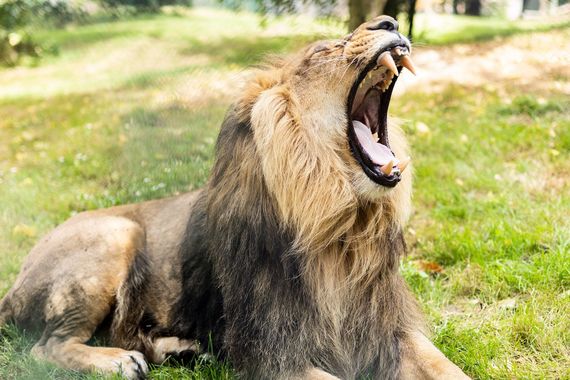
A lion kicking back at Fota Wildlife Park.
“We’re allowing the public to choose his name on our website,” says Marketing Manager Róisín FitzGerald as we navigate the 100 acres in a ranger’s buggy while admiring giraffes, lions, wallabies and sloths. We also glimpse the newborn, even though his protective mother shields him from curious onlookers.
“Overall, we have 135 species and 1,300 animals,” explains Róisín, who originally hails from Cahir in County Tipperary — there, she developed a love of animals on her parents’ farm. “We’re an open-air facility, which gives our diverse inhabitants freedom to roam about. Our visitors tell us that memories of their time here last a lifetime.”
In fact, my first time in Fota Island over 30 years ago was specifically to visit this wildlife park — and, as Róisín mentioned, those vivid memories remain with me.
The park was established as an alternative to Dublin Zoo — which had, by the 1980s, reached maximum development. The project became a collaboration between the Zoological Society of Ireland and University College Cork, who’d offered the land free of charge under a license agreement.
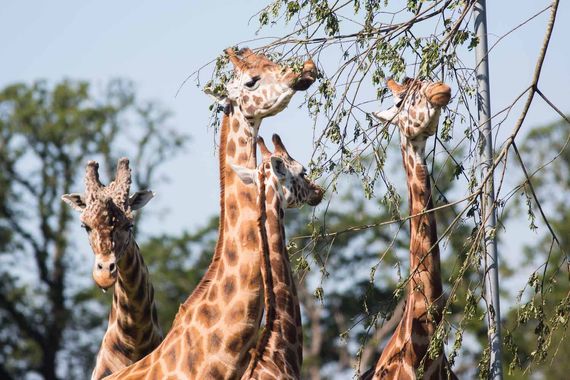
Giraffes at Fota Wildlife Park.
Primarily funded by donations, Fota Wildlife Park opened in 1983 — since then, much has changed, including the addition of the Asian Sanctuary, home to Sumatran tigers and lion-tailed macaques. 2019 saw the opening of the Madagascar Village, which is overrun with delightfully mischievous ring-tailed lemurs.
“Education, research and conservation — as well as protecting and breeding endangered and vulnerable wildlife like European bison and Scimitar-horned Oryx — are all integral to our work,” Róisín reveals. She adds that the park connects with animal lovers worldwide through its website and social media platforms.
A room with a view
For the duration of my stay, I’m a guest of the latest of the island’s trio of attractions — the five-star Fota Island Resort. Since opening in 2006, this elegant establishment has been a popular choice for weddings, food lovers and those wanting to unwind in their award-winning spa.
On my arrival, I drive through the wooded grounds and spot guests enjoying many onsite facilities, including fairy trails and Fota Adventure, which offers activities like archery, kayaking and orienteering.
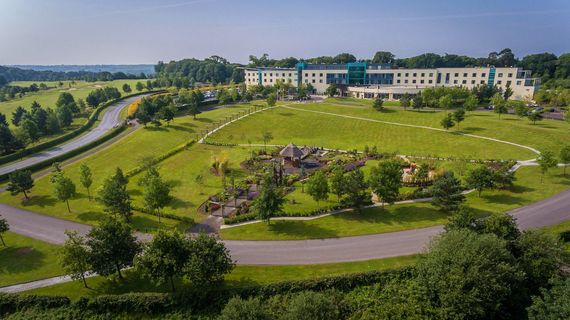
Five-star Fota Island Resort.
While entering the reception area — cosy, lavishly furnished and, thanks to the wooden beams crossing the ceiling, resemblant to an Alpine lodge — I notice golfers weighed down by bags. Their appearance is unsurprising as the resort’s championship courses have hosted prestigious tournaments, including the Irish Open.
As you’d expect from an establishment of this standing, the staff are welcoming and cheery — a perfect reflection of the warmth that’s so evident throughout County Cork.
In addition to self-catering lodges, the resort offers 131 en-suite rooms and eight luxurious suites — my choice for my stay. Spacious, relaxing and equipped with woodland views, this suite would perfectly suit those celebrating landmark occasions.
A highlight here is undoubtedly their specialty restaurant, The Cove. The menus created by Head Chef Maris Urbanovics reflect his love of nature, foraging and ancestral flavors. The eight courses, which include oysters, monkfish and venison, leave all my senses in a swoon and are complemented by drink pairings chosen by the restaurant manager and experienced sommelier, Jarek Tusz.
“Our produce comes from suppliers in the surrounding area like Ballycotton, Shanagarry and Ballyhoura,” says General Manager John O’Flynn. “We’re incredibly proud that our chefs across all our restaurants use local suppliers — which, in this post-pandemic world, is more important than ever.”
When I quiz him about what makes his job special, John, who hails from nearby Glenmore, references his delight at welcoming different generations and witnessing the connections formed in the hotel.
Next stop, America!
Beyond Fota Island, East Cork offers many attractions for visitors, including the cookery school at Ballymaloe as well as Spike Island — the former monastery, fort and prison.
A brief drive from Fota Island is Cobh, accurately described by Condé Nast Traveller as “one of the most beautiful small towns in Europe”. Famed for its candy-colored buildings, Victorian flourishes and promenade dedicated to John F. Kennedy, this port was the final stop on the Titanic’s ill-fated journey in 1912.
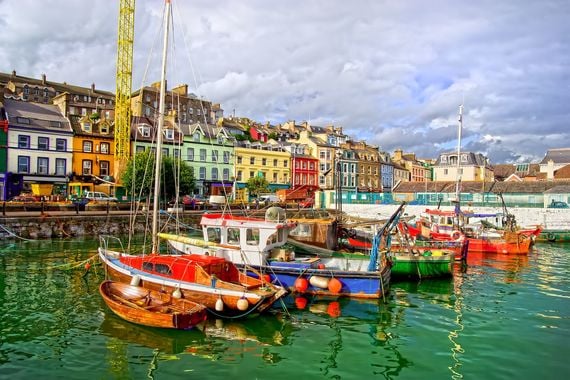
Cobh, County Cork.
Dr Michael Martin — a navy veteran who runs specialized tours — lists the reasons Cobh became a prominent European harbor, including its location, defensive qualities, size and depth of its waters.
“It was a safe haven for ships,” he says, adding that in the wake of the Famine, Irish people emigrating to America could easily reach the port by the newly built railroad.
Amongst the tributes to this era across Cobh — formerly known as Queenstown — is a statue of Annie Moore outside the beautiful and immersive Cobh Heritage Centre. In 1892, she was the first immigrant to pass the newly opened federal immigration inspection at Ellis Island Station. The song, Isle of Tears, celebrates her story.
Discussing the Titanic — which is documented in the historic White Star Line Building — Michael argues that Hollywood has romanticized the story.
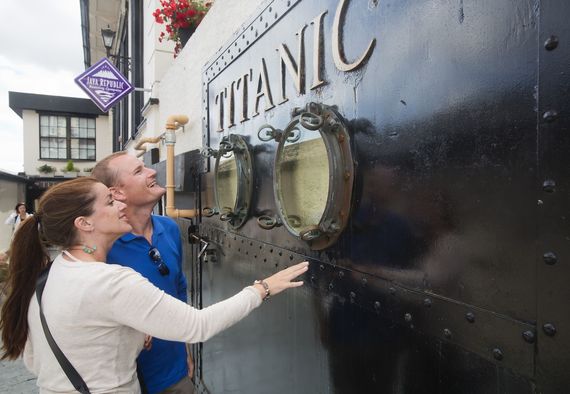
The Titanic Experience at Cobh.
“Was the Titanic the biggest ship at the time? No. Were locals clamoring to see it? Also, no. For them, it was just another immigrant ship, nothing special — one of hundreds.”
He continues: “The people of Cobh were more devasted by the sinking of the Lusitania three years later, after being torpedoed by a German U-boat off the coast of Kinsale. 1,198 passengers and crew were killed — many locals were involved in rescuing passengers and recovering bodies.”
Their heroic efforts are commemorated by the bronze Angel of Peace statue depicting an angel and two of these fishermen.
Elsewhere, Cobh is a town of superlatives. The Royal Cork Yacht Club is the world’s oldest, St Colman’s neo-Gothic cathedral is Ireland’s highest, while local athlete Sonia O’Sullivan, immortalized in statue form, is arguably one of sport’s greatest.
Sláinte!
Before leaving East Cork, I wet my whistle in Midleton’s Jameson Distillery, currently embarking on an exciting upgrade ahead of the whiskey’s 200th anniversary in 2025.
“It’s a once-in-a-lifetime opportunity to see how this iconic drink is created,” says my guide Joe Treacy about the world’s best-selling Irish whiskey.
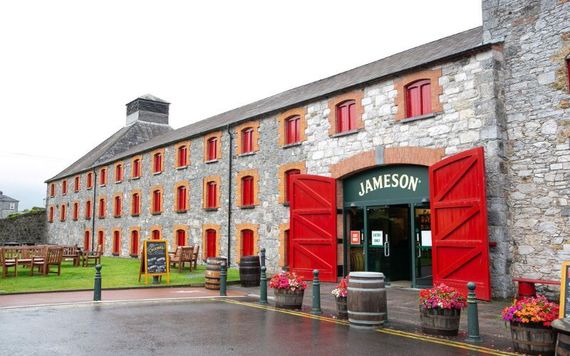
Midleton’s Jameson Distillery.
While the potent tipple was founded in Dublin in the 18th century by Scottish lawyer John Jameson, in 1966, following some turbulent years, the company merged with Cork Distillers and John Powers to form the Irish Distillers Group. 10 years later, Jameson’s entire distilling process was relocated here.
“In addition to having the facilities, space and skilled workers, we are close to Cork Harbour and have the Dung River and barley on our doorstep,” Joe says.
Formerly a woolen mill and Napoleonic barracks, this sprawling site, with its red-bricked chimneys, has many points of interest — notably their pot still, officially the largest of its kind, according to the Guinness Book of Records.
It seems East Cork needs a long, wide and sturdy mantlepiece to hold all its many awards.
Visit purecork.ie for additional information.
*Originally published in January 2024. Updated in May 2024.
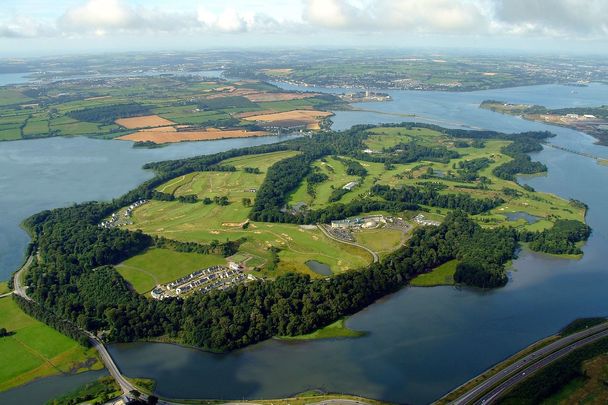

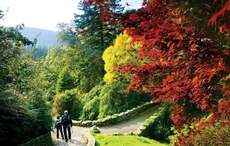
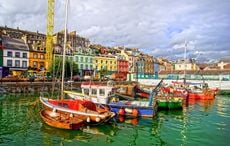
Comments